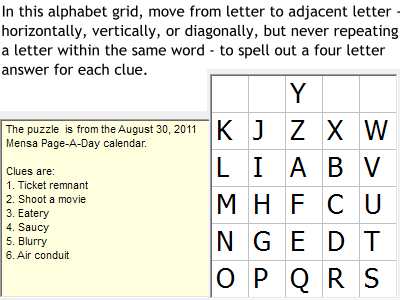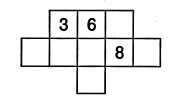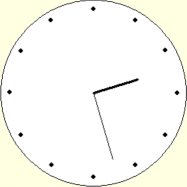What's New - September 2011
[Home]

September 1, 2011: Last Tuesday's puzzle from our Mensa Puzzle-A-Day calendar had me stumped until I remembered that I had written a program to find words meeting given conditions within a grid of letters. With the list of possible solution words, finding those that satisfied the clues was easy. When I decided to save the puzzle for future reference, I realized that the Save and Load buttons failed to include the clues! Alphabet Grid Version 3.0 posted today adds the puzzle to the download files and fixes that problem of the missing clues.

September 7, 2011: I've been working off-and-on for several weeks at adding Latitude/Longitude coordinate handling to our Traveling Salesman Problem solver. TSP Version 3.0 was a fun exercise and satisfying to be able to place any number of US cities on a Mercator projection map based on Lat/Long coordinates once the user locates two cities on the map. There's lots more that could be done, but it's a start.

September 9, 2011: A new puzzle and a small fix to
an old friend, Brute Force, today.
The fix involved incorrect sorting of solution rows when multiple solutions
existed. Here is the puzzle which uncovered the problem and which I've added to the download files. Brute
Force solves puzzles like this one by evaluating all possible arrangement of
allowed variable values. In this case, there are 386,000 ways to assign
values 1 through 9 to variables "a" through "i".
Variables were assigned right to left and top to bottom in the grid, so we have
equations like a=3, b=6, c<>5, c<>7, c<>9,
etc. where "<>" means "not equal to". In all, it took 26 equations
to get down to a single solution, but only 1/10th of a second for my laptop to find
it!
|
|
|
5th right angle occurs at 2:27:16.36 |
September 18, 2011: One of the first programs
posted on DFF over 10 years ago, was a beginner's level program showing how to
draw an analog clock. A later version answered the question "In a 12 hour
period, how many times are the hour and minute hands of an analog clock at right
angles to each other?" Judy, an enthusiastic math teacher in Australia,
recently wrote and asked if I could stop the animated clock at the right angles
to help the kids understand what is going on as the clock hands turn. Of
course I can; I love to help teachers!. Here's
Clock Angles Version 2 posted today.
September 24, 2011: Subtracting Squares is a two player game defined this way:
" A positive integer is written down and two players take turns subtracting squared integer values (1,4,9, etc.) until one player leaves zero, in which case he (or she) is the winner. What square should the first player subtract if the original number is 29?"
I adapted the game from Mathematical Bafflers, Angela Dunn, Dover Publications and, in my version, the starting value can range from 1 to 50 and computer can be one of the players.

